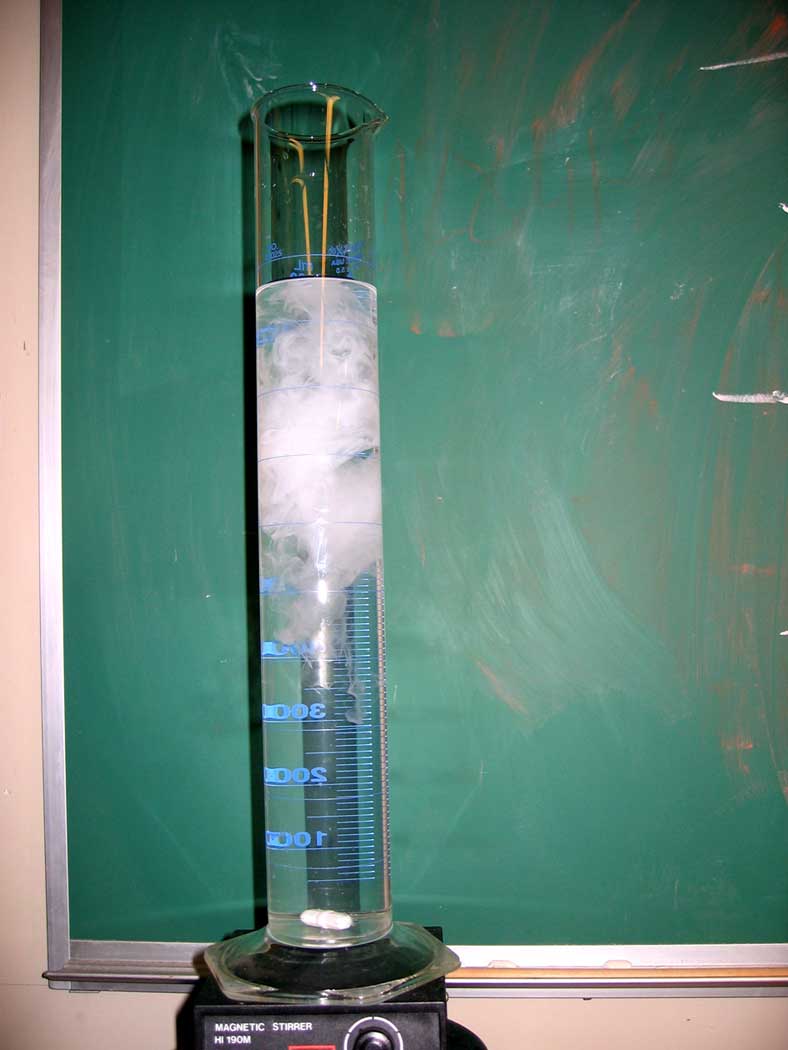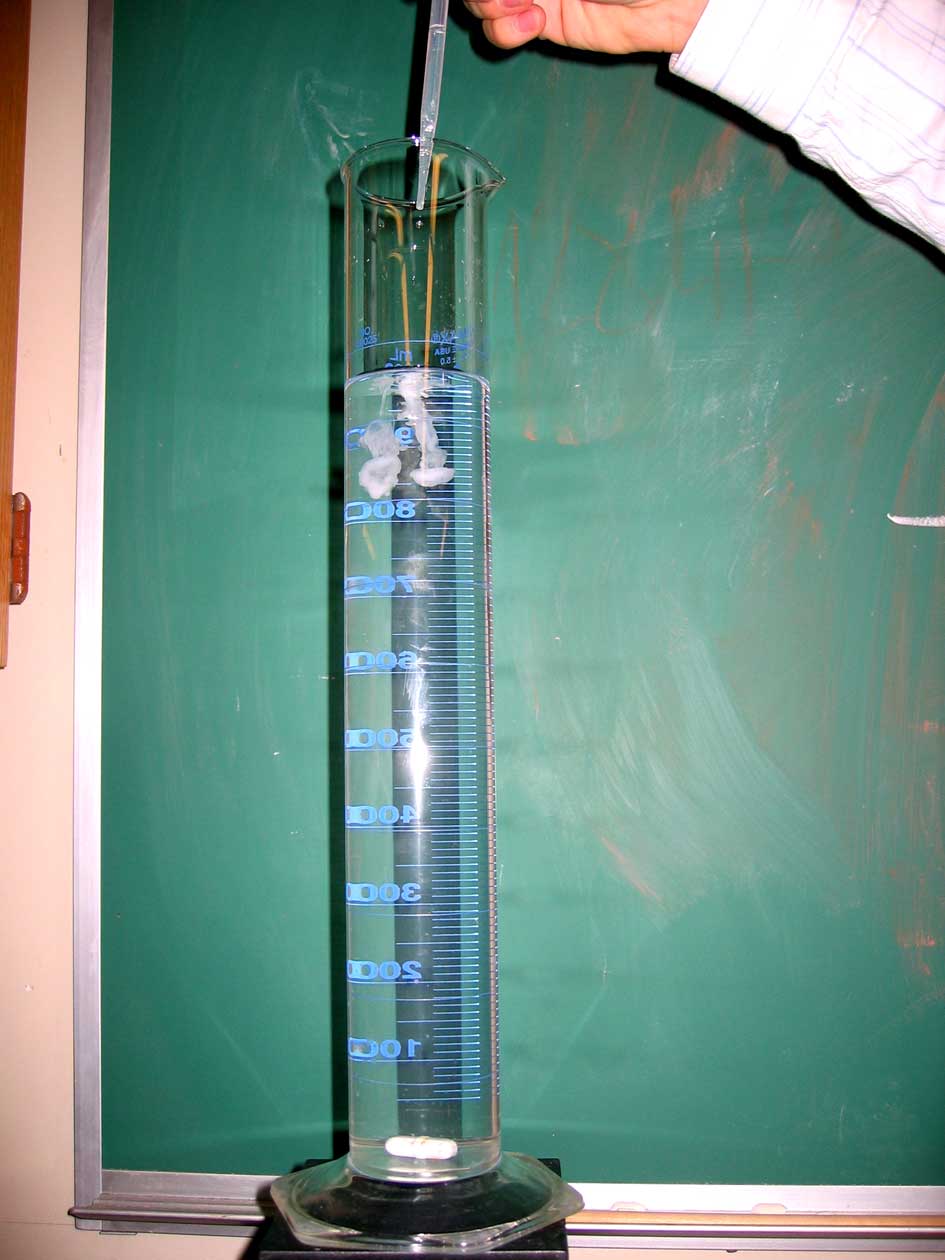Ingredients: barium nitrate, sulfuric acid, magnetic stirrer or glass rod
Procedure: A minimal recipe follows.
1. Prepare a dilute solution of sulfuric acid in a tall vessel.
2. Prepare a solution of barium nitrate.
3. Add a few drops of barium nitrate to the acid solution, turning the solution with a magnetic stirrer (or glass rod).
Understanding:
Barium is well-known for its use in medicine. Electromagnetic X-ray waves are strongly absorbed by barium, an atom with a large atomic number and a large number of electrons that effectively interact with the X-ray radiation. Individuals having their gastrointestinal systems investigated can drink (or have otherwise inserted, by enema) the milky white barium sulfate. The subsequent X-rays clearly show the extent of the barium sulfate, painting a clear picture of the outline of the gastrointestinal system.
 The reaction of soluble barium nitrate with soluble sulfuric acid is quite dramatic. Upon the addition of a few drops of barium nitrate solution, a delicate cloud of white precipitate forms, gradually growing in length and finally "filling" the vessel. The reaction that occurs is
The reaction of soluble barium nitrate with soluble sulfuric acid is quite dramatic. Upon the addition of a few drops of barium nitrate solution, a delicate cloud of white precipitate forms, gradually growing in length and finally "filling" the vessel. The reaction that occurs is
Ba(NO3)2(aq) + H2SO4(aq) →
BaSO4(s) +
2 H+(aq) + 2 NO3-(aq)
We can consider the structure and properties of the sulfate and nitrate ions in detail. The sulfate anion is found to be square planar in shape, the central sulfur atom leading to the four oxygen atoms at the four corners of the square. The four equivalent sulfur-oxygen bonds are intermediate in strength between a single bond and a double bond. The sulfur atom carries no formal charge.
The nitrate anion is found to be trigonal planar in shape, the central nitrogen atom leading to the three oxygen atoms. The three equivalent nitrogen-oxygen bonds are intermediate in strength between a single bond and a double bond. The nitrogen carries no formal charge.
Developing an atomic level understanding of solubility
Question:
What makes the nitrate ion so soluble, whether it is introduced to water in the form of nitric acid, HNO3, or barium nitrate, Ba(NO3)2? What makes the sulfate ion so soluble when it is introduced to water as sulfuric acid, H2SO4, but so insoluble in the form of barium sulfate, BaSO4?
 The reaction of soluble barium nitrate with soluble sulfuric acid is quite dramatic. Upon the addition of a few drops of barium nitrate solution, a delicate cloud of white precipitate forms, gradually growing in length and finally "filling" the vessel. The reaction that occurs is
The reaction of soluble barium nitrate with soluble sulfuric acid is quite dramatic. Upon the addition of a few drops of barium nitrate solution, a delicate cloud of white precipitate forms, gradually growing in length and finally "filling" the vessel. The reaction that occurs is
 Into a tall vessel of clear liquid, drops of a second clear liquid are added. A lovely white precipitate forms, descending through and eventually "filling" the vessel.
Into a tall vessel of clear liquid, drops of a second clear liquid are added. A lovely white precipitate forms, descending through and eventually "filling" the vessel.